


Safety is a constant priority in workplaces all over the world. But it's often most pressing and most 'vulnerable' in the industries - in industries like construction, oil and gas, forestry and mining.
The activities, equipment and sites where work is conducted in the industries is inherently dangerous, and maintaining high safety standards is critical to the safety and success of projects, companies and of course of actual workers.
So where do safety reports fit into actually keeping people, communities and assets safe?
A safety report is a document prepared to 'report' on a specific safety incident, process or outcome.
Safety reports are the mechanism for capturing what is happening on site so that safety teams, engineers and management can understand what's happening and make decisions about how and what to improve.
Safety reports are mostly used to 'report' incidents, near misses and hazards, but the overarching intention of these reports is to feed into a positive feedback loop whereby a company learns what went or is going wrong; analyses what went wrong; and then improves their processes, equipment etc. to continuously improve their safety record.
So what's the big deal about the actual format of a safety report?
As I mentioned, the mechanism for documenting safety issues is the safety report, and in order for the mechanism to do it's job, it musty be formatted correctly.
There are a number of reasons which make how you format your safety reports critical to how often they get filled out and what you are able to do with the output data.
One of the major and often overlooked reason for having sound safety report formatting is to increase the likelihood of workers conducting safety reports. A well formatted safety report which is clear, concise and easy-to-complete is much more likely to be completed and submitted than one which is long-winded and difficult.
Assembling a document which only captures what is absolute necessary is the first step to achieving this goal. You can do this with smart field choice or conditional form logic. The second step is the source of your document. Completing word, excel and PDF documents on site is a hassle and logistical nightmare with things getting easily lost or damaged. A smart safety app which is dedicated to risk assessments or safety checklists will help ease these headaches by making forms easy to fill out and automatic to upload and organise.
The second reason that safety report formatting is so important is that it's impossible to derive any understanding from poorly formatted and unstandardised safety reports and forms.
If your teams and engineers are working off of different report versions, then you can't possibly aggregate all of this information into coherent insights. And if you do manage to convert all of that paper-based, word or excel data into a spreadsheet or something similar, it will take hours of manual data entry and work.
Maintaining standardised safety templates is the way to create standardised safety reports which make it easy to analyse your safety data. Everyone completes the same latest version safety reports; all of that data is standardised and organised; and then anyone can manipulate and display that data in charts, tables, graphs and more - without doing any extra work or double-handling.
The key to the above passage is that the important part of your safety report formatting is that it stays consistent and standardised across your projects, teams and ideally the company.
Companies typically deploy a number of different safety reports (and other safety documents) to every project, which is necessary. It's impossible to capture everything safety related on one report - so the reports are broken down into events or activities which occur frequently enough and are important enough to warrant their own report.
You'll see some common threads which permeate all report types, but there are also some unique fields and formatting which only make sense for that unique use case.
The hazard report is a site safety staple. Sites are filled with hazards, and reporting on hazards which pose a threat to the health and safety of workers or other parties is much better than reacting to an incident once it's happened. In fact, the power of the hazard report lies in its proactive nature - which is actually unlike many other safety report types.
The key to a good hazard report format is to keep it simple. You're not looking for an incredible amount of detail - and you're certainly not looking to make the lives of people who complete hazard reports difficult.
This hazard report is a great example of good formatting. The report has all of the necessary record keeping information which is critical for safety reporting, and then dives into the safety details. People on site can quickly select the location of the hazard and the company or party involved - before selecting a risk level for the hazard.
This type of formatting makes it easier for people to fill in on site, and easier for management or safety teams to sift through and prioritise.
Other report fields include a description of the hazard, photos (supporting evidence for clarity and record keeping) and the immediate actions taken. Following this, like many safety reports, the document also has a signoff field to make it an official record.
I'm sure you are starting to see the value of correct safety report formatting in increasing safety report completions and actioning them once they are completed.
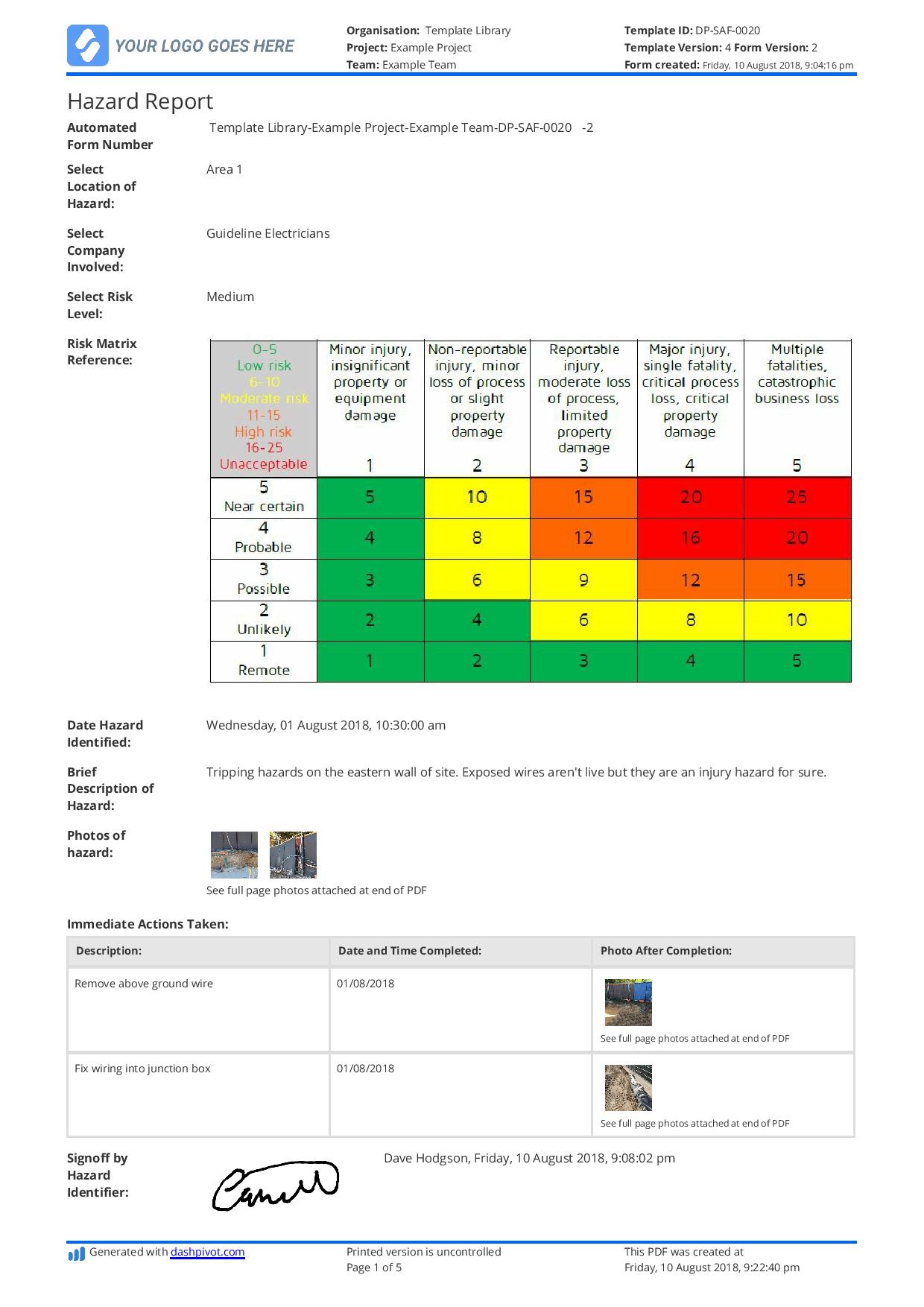

Use and edit this hazard report.
The incident report is pretty self-explanatory. It's sole purpose is for the reporting of an incident. You can see this reflected closely in its formatting below.
Because the report acts as a notification which will later be actioned, the form is made up of a series of questions which will then be judged and analysed for a number of reasons:
Once again, this safety report has been made very easy to fill out with simple checklist questions and explanation fields where required.
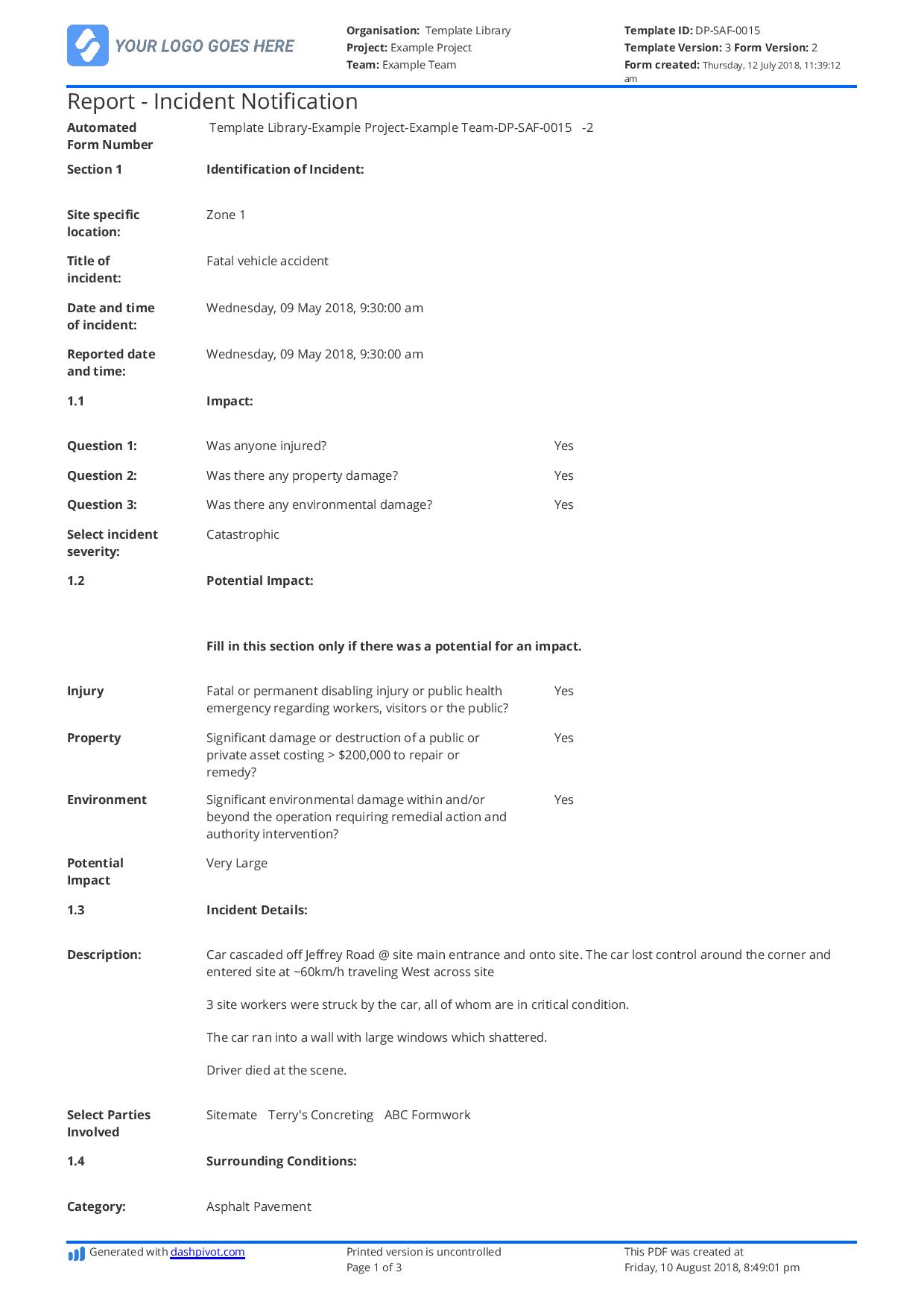


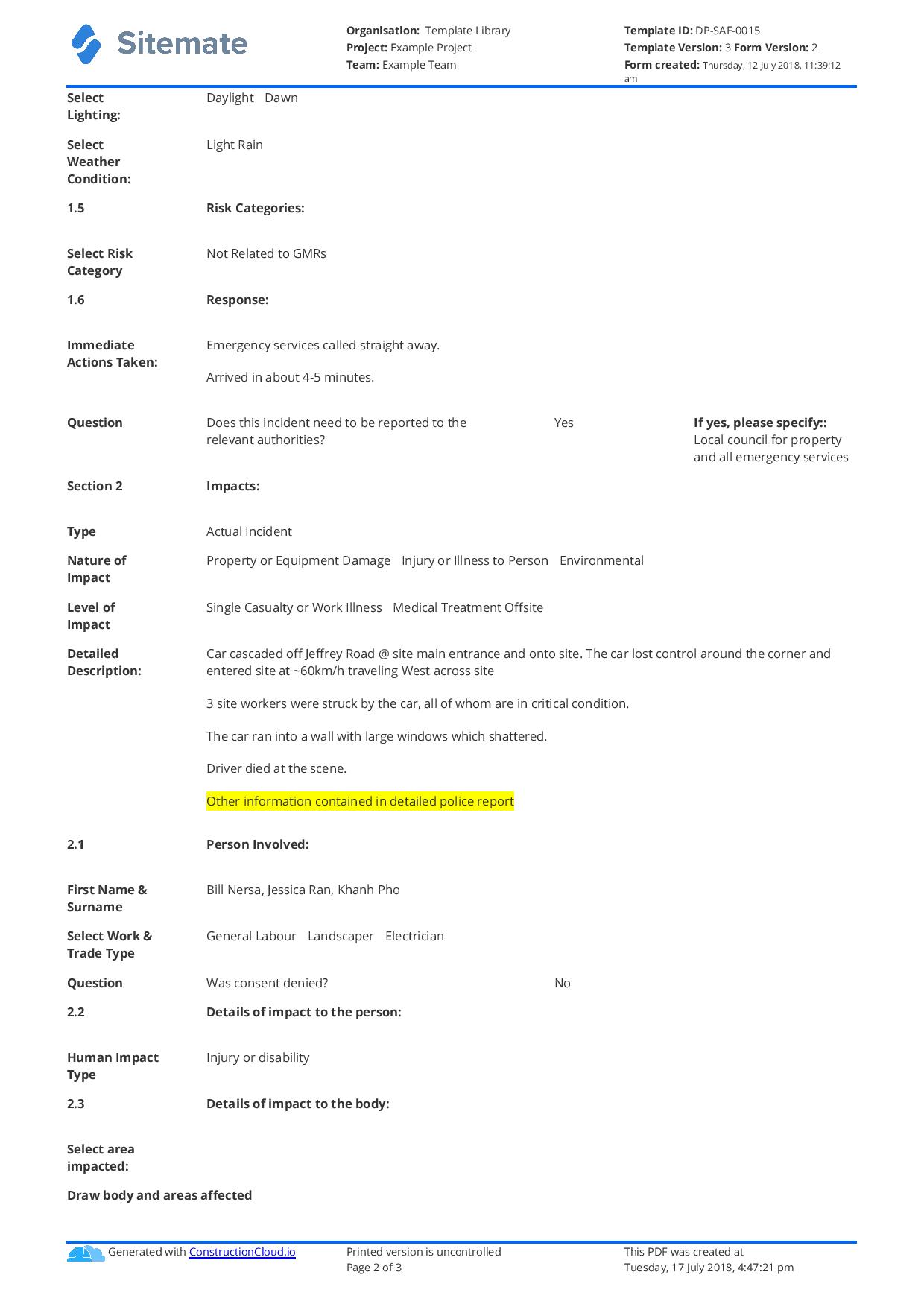
Use and customise this safety incident report.
The near miss report is an often underused but powerful safety report. While workers find it easy to skip over or ignore a near miss, teams can learn a lot from near misses and make smart decisions about how to make sure those near misses don't turn into actual incidents.
The near miss report format below is similar to the hazard report, with the main difference being that with a near miss there is an observer section and signoff, as well as a reviewer and signoff.
This is so that the reviewers can make a call on the near miss action steps and corrective actions required to stop that near miss from turning into something more problematic.
Once again, included in this safety report format are evidence in the form of photos and videos, a report of what happened and some notes about what will be done. This is the natural feedback loop of safety flows.
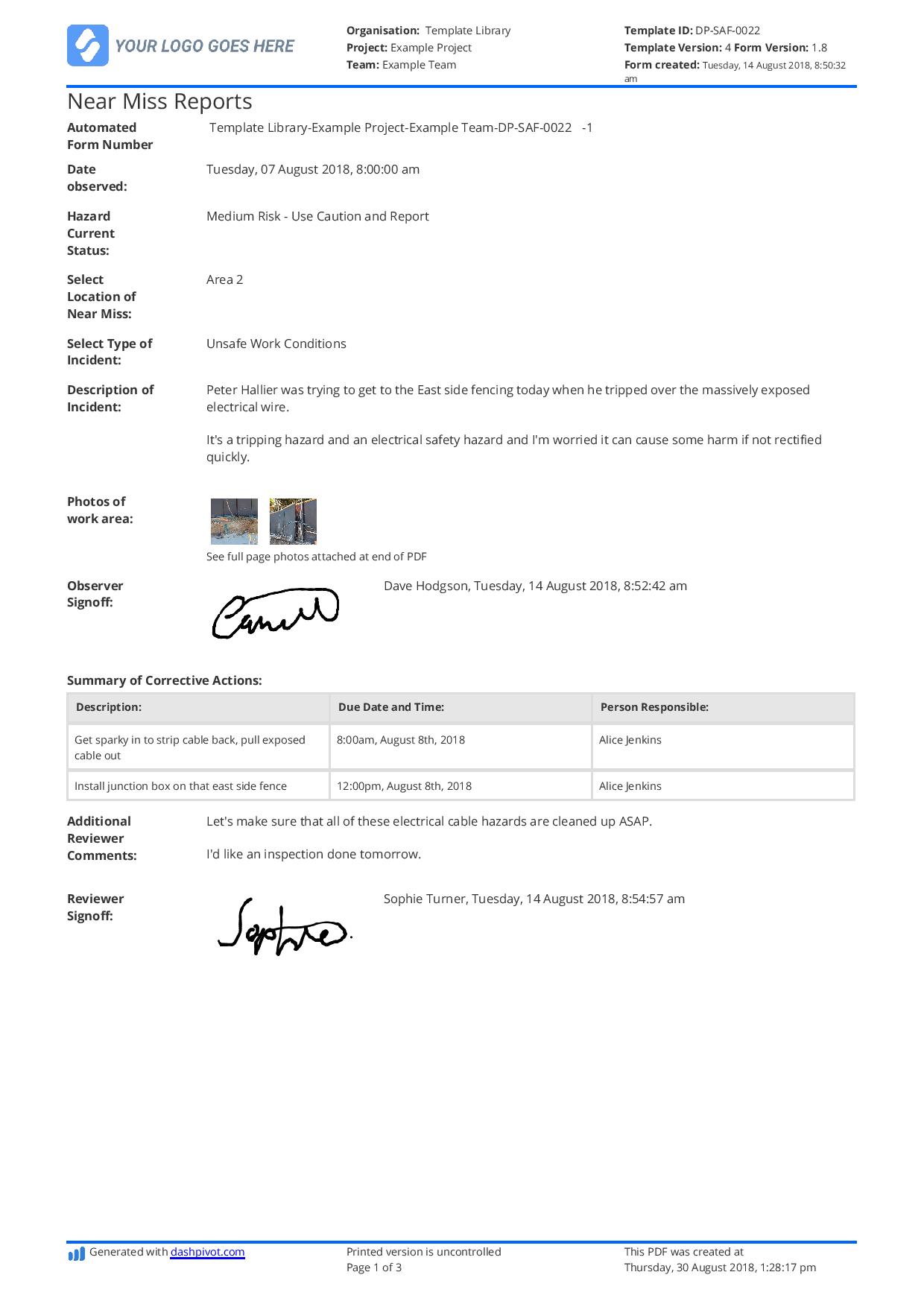

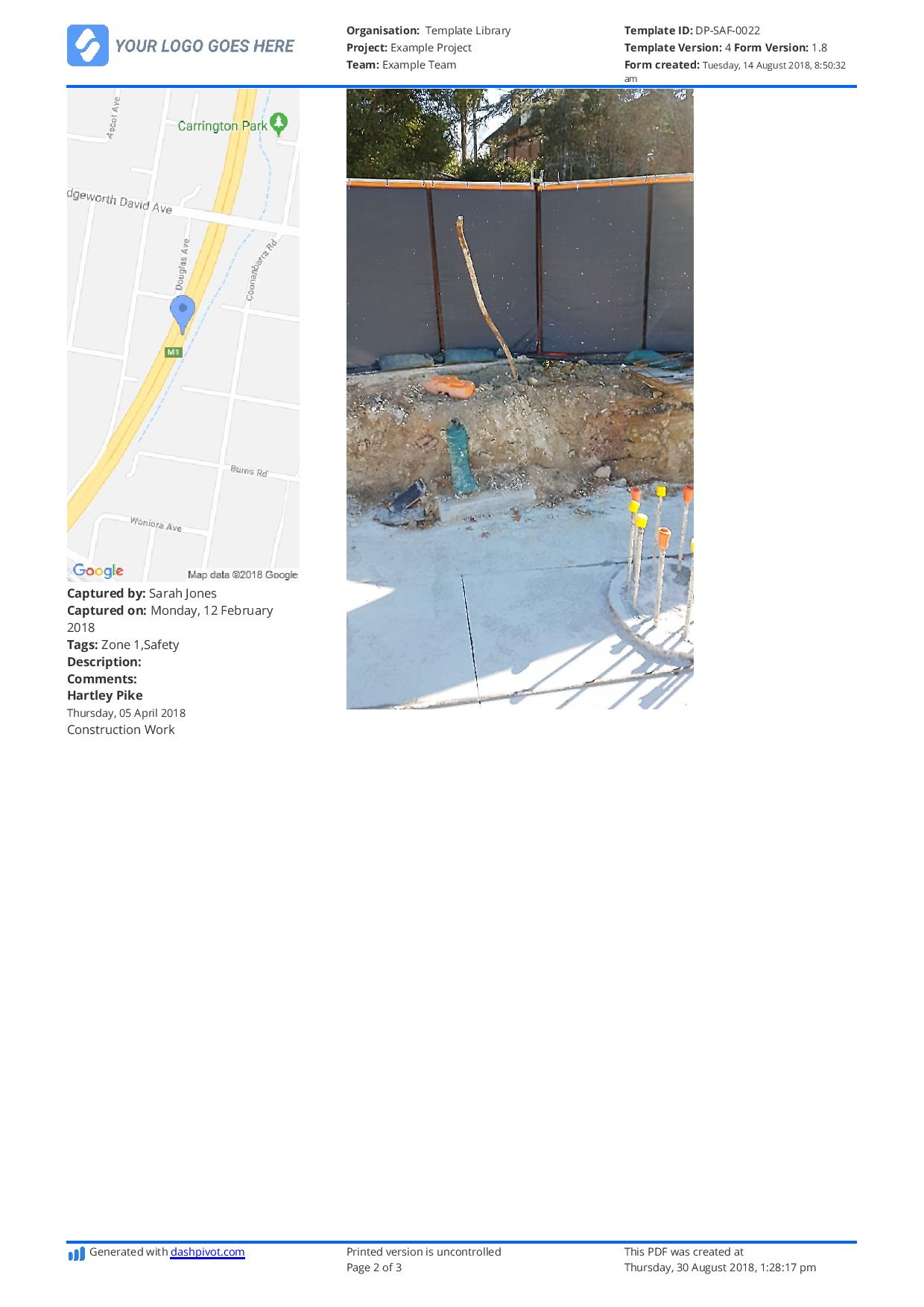
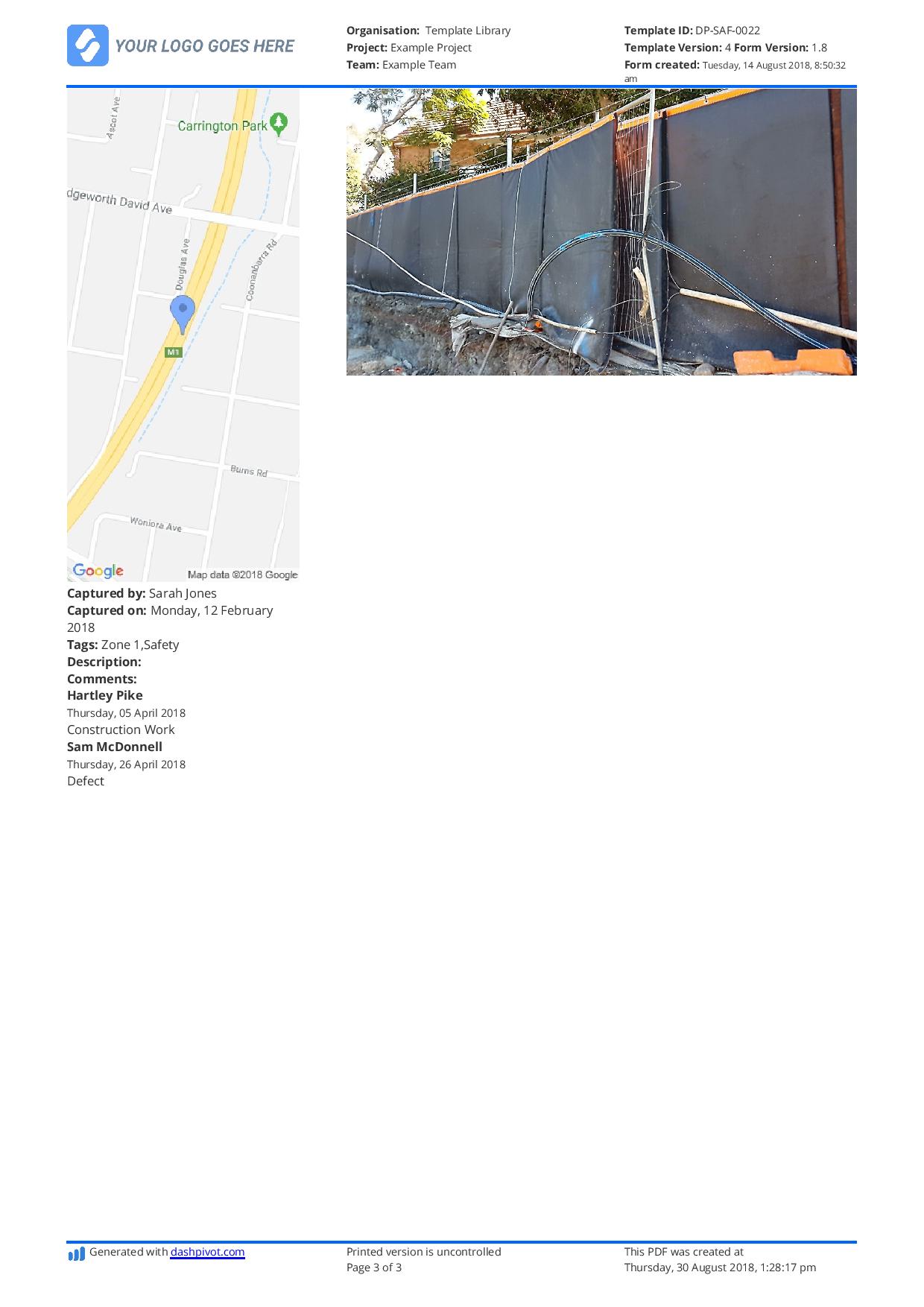
Use this near miss report for free.
After looking at these well-formatted safety reports, you may be wondering how you can streamline and improve your safety report format and workflows.
There are a few different levels of safety sophistication which you can employ. Whether or not you employ them will come down to your resources (both in terms of bandwidth and what you can't afford to do with limited time), what your safety goals are, and how you see your safety processes and reports fitting into your overall internal management system structure.
Phase 1 starts with creating a safety report and safety management plan. This plan outlines why you are looking to address your safety reporting and what you are looking to achieve - while setting measurable goals and metrics which you can measure against.
Phase 2 of improving your safety reporting format comes down to simplifying and standardising your forms. This step is an absolute must if you are looking to create reliable and sustainable safety practices. Get all of your safety reports together and look for ways to combine, shorten and generally improve how they are completed and organised.
Phase 3 is to digitise as much of the safety reporting process as possible. This can start with a standalone app for something specific like incident reporting, a health and safety reporting app and develop into a full safety management system - which takes care of safety report creation and management, safety report photo and form capture, and safety report organisation, automation and analytics.
Dashpivot has a solution for you, no matter what scale of digitisation you are ready for. If you want to begin phase 1 or have a specific safety report you would like to improve, then get started with a digital template below now. They are all free to use and come pre-built with the report formatting you see above.